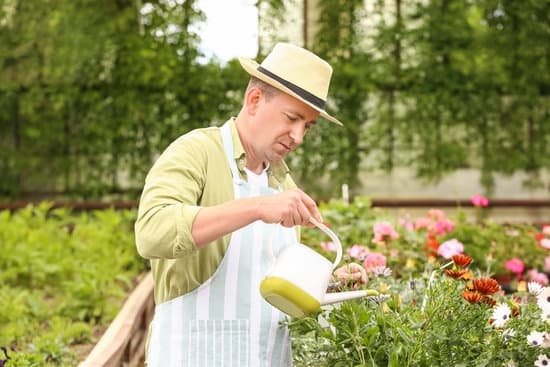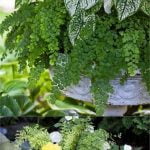Backyard Vegetable Gardening Tips
Once you have mastered the art of vegetable gardening, you may want to consider expanding your garden to include some vegetables that can be grown in your backyard. There are a number of vegetables that can be successfully grown in a backyard garden, including tomatoes, peppers, cucumbers, zucchini, eggplant, and beans.
When planning your backyard vegetable garden, it is important to consider the size of your garden and the amount of sunlight it receives. Most vegetables require at least six hours of sunlight per day. If your garden does not receive enough sunlight, you may want to consider growing vegetables that can be grown in partial sunlight, such as lettuce, spinach, and carrots.
Another important factor to consider when planning your backyard vegetable garden is the type of soil you have. Most vegetables prefer soil that is rich in nutrients and has a pH level of 6.5 or higher. If your soil is not ideal for growing vegetables, you can improve its quality by adding organic matter, such as compost or manure.
When planning your garden, it is also important to consider the spacing requirements of the vegetables you are planning to grow. Most vegetables require at least 18 inches of space between plants. Tomatoes, peppers, and eggplant can be grown in close proximity to each other, but should be spaced at least 36 inches apart.
Once you have planned your garden, it is time to start planting! The best time to plant most vegetables is in the spring, when the soil is warm and the weather is cool. However, some vegetables, such as lettuce and spinach, can be planted in the fall.
When planting your vegetables, be sure to follow the instructions on the seed packet. Most vegetables should be planted at a depth of 1-2 inches. The exception to this is tomatoes, which should be planted at a depth of 3-4 inches.
Once your vegetables have been planted, it is important to water them regularly. Vegetables require 1-2 inches of water per week, depending on the weather and the type of soil you have. You can water your vegetables manually or with a garden hose.
If you are using a garden hose to water your vegetables, be sure to use a soaker hose instead of a regular hose. A soaker hose will help to distribute the water evenly over the surface of the soil, which will help to improve the quality of the soil and the health of your vegetables.
In addition to watering your vegetables regularly, you should also fertilize them periodically. Vegetables require a balanced diet of nitrogen, phosphorus, and potassium in order to grow healthy and strong. You can fertilize your vegetables by applying a commercial fertilizer or by using organic matter, such as compost or manure.
Finally, be sure to harvest your vegetables regularly. Vegetables that are allowed to grow too large will become tough and will not taste as good as smaller vegetables. Harvest your vegetables regularly by using a garden shear or a knife.
If you follow these tips, you can successfully grow vegetables in your backyard garden.
Container Vegetable Gardening Tips
Container vegetable gardening is a great way to garden if you have limited space. You can grow a variety of vegetables in containers on your patio, deck, or porch.
When choosing containers for vegetable gardening, make sure they are big enough to accommodate the plants. You will also need to make sure the containers have drainage holes so the water can drain out.
You can use a variety of materials for containers, such as plastic, metal, or clay. If you use plastic or metal containers, make sure they are food grade so the vegetables will not be contaminated.
When planting vegetables in containers, make sure to use potting mix, not garden soil. Potting mix is designed to drain well and to provide the nutrients the plants need.
Some vegetables that do well in containers include tomatoes, peppers, cucumbers, lettuce, and herbs.
Vegetable Gardening Tips For Beginners
Starting a vegetable garden can seem like a daunting task, but it can be a fun and rewarding experience. Here are a few tips to get you started:
1. Choose a sunny location: Vegetables need at least six hours of sunlight per day to grow properly.
2. Prepare the soil: Vegetable gardens need well-drained soil that is rich in nutrients. Amend the soil with compost or manure before planting.
3. Choose the right plants: Not all vegetables grow well in every climate. Choose plants that are suited to your region.
4. Plant in staggered rows: This will make it easier to harvest the vegetables.
5. Water regularly: Vegetables need water to grow properly. Make sure to water them regularly, especially during hot weather.
6. Harvest regularly: Vegetables taste best when they are fresh. Harvest them regularly to ensure that they are at their peak flavor.
Vegetable Gardening Tips Australia
There are many benefits to growing your own vegetables, from the health and nutritional benefits, to the environmental and financial savings. If you are new to vegetable gardening, or are looking for tips to improve your success, here are some tips to help you get started.
Location, Location, Location
The first step in successful vegetable gardening is to choose the right location. You will need a spot that gets plenty of direct sunlight, and is well-drained. If you are gardening in containers, be sure to choose a pot that is large enough to accommodate the plants, and make sure to use a soil mix that is designed for vegetables.
Prepare the Soil
The next step is to prepare the soil. Vegetables need rich, fertile soil in order to grow well. You can improve the soil by adding organic matter such as compost or manure. Be sure to mix it in well and break up any clumps.
Select the Right Plants
Not all vegetables are suited for every climate. Be sure to select plants that will thrive in your area. You can find information on the best plants for your region online or at your local garden center.
Water Well
Vegetables need plenty of water to grow well. Be sure to water them regularly, especially during hot, dry weather.
Fertilize Regularly
A good diet of fertilizer is essential for healthy vegetable growth. Be sure to fertilize your plants regularly with a balanced fertilizer.
Harvest Regularly
One of the best things about growing your own vegetables is the delicious harvest! Be sure to harvest your vegetables regularly, so that they don’t get too big or go to seed.
These are just a few tips to help you get started in vegetable gardening. With a little bit of practice, you will be able to grow delicious, nutritious vegetables right in your own backyard!
Best Vegetable Gardening Tips
If you’re looking to get into vegetable gardening, or are just looking for some tips to improve your current skills, you’ve come to the right place! Here are some of our best tips for vegetable gardening:
1. Choose the right vegetables for your climate and soil. Not all vegetables are suited for all climates – for example, tomatoes love the heat, while peas and lettuce prefer cooler temperatures. Similarly, different vegetables grow best in different types of soil. Do some research to figure out which vegetables will do best in your climate and soil type.
2. Amend your soil. Most soils need some amendment in order to support healthy vegetable growth. Add organic matter such as compost, manure, or leaf mold to your soil to increase its nutrient and water-holding capacity.
3. Use the right planting techniques. When planting vegetables, be sure to plant them at the correct depth and spacing. Follow the instructions that come with your vegetable seed packets, or consult a gardening book or website for more specific information.
4. Water your vegetables regularly. Vegetables need regular watering in order to produce healthy plants and good yields. Check your garden daily, and water your vegetables whenever the top few inches of soil feel dry to the touch.
5. Protect your vegetables from pests and diseases. Certain pests and diseases can damage or even kill your vegetables. To protect your plants, use organic pest control methods such as crop rotation, companion planting, and trap crops. And if a disease does take hold, be sure to treat it early to prevent further damage.
6. Harvest your vegetables regularly. Vegetables that are left to grow too large will be tough and will not taste as good as those that are harvested at the correct size. Harvest your vegetables regularly to ensure the best flavor and texture.
7. Store your vegetables properly. Once you’ve harvested your vegetables, you need to store them properly so that they will last. Vegetables should be stored in a cool, dry place – the fridge is ideal – and should be eaten within a few days of being harvested.
By following these tips, you can create a thriving vegetable garden that will provide you with delicious, healthy vegetables all season long!

Welcome to my gardening blog! I am passionate about plants and enjoy sharing my knowledge and experiences with others. In this blog, I will write about everything related to gardening, from tips on how to get started to updates on my own garden projects.





